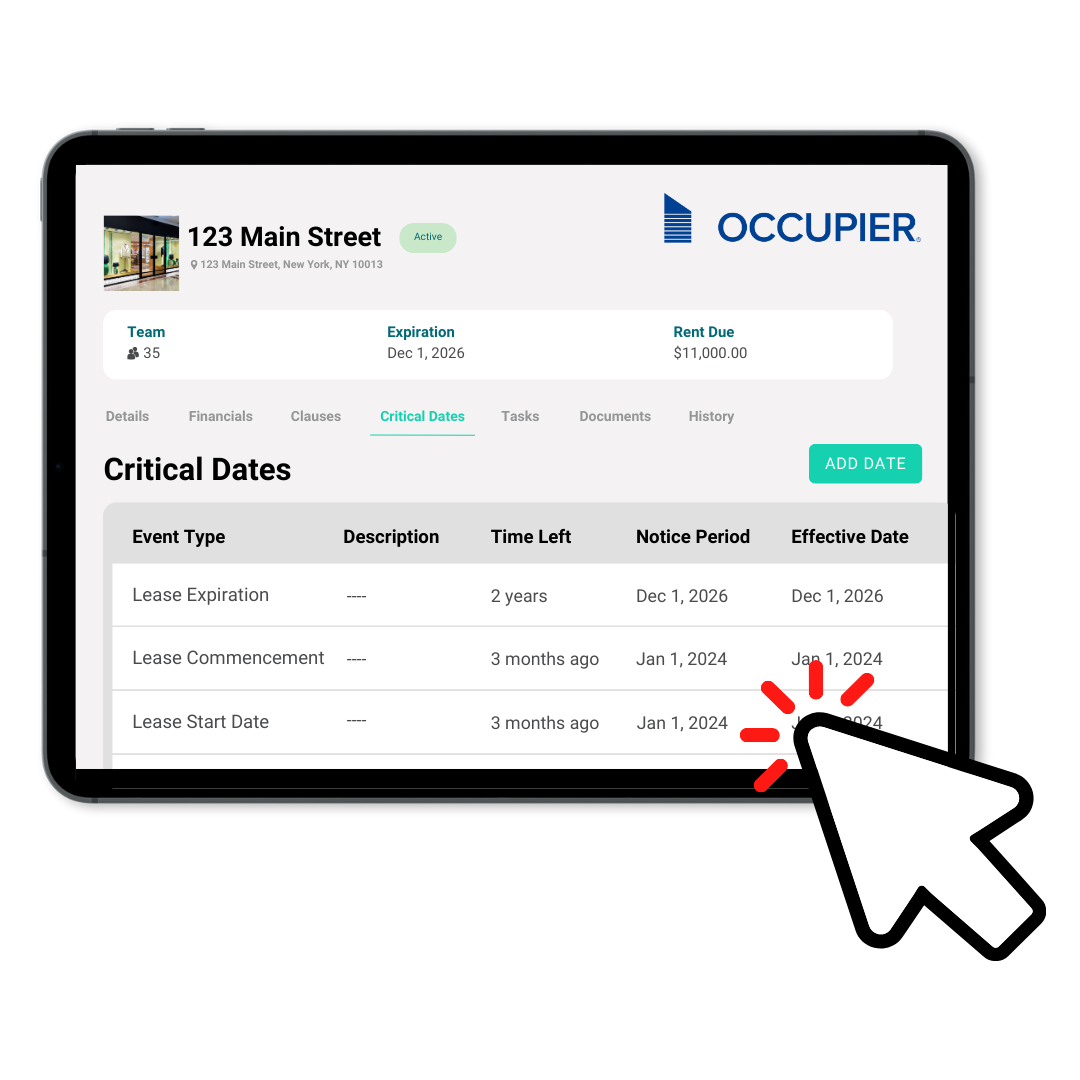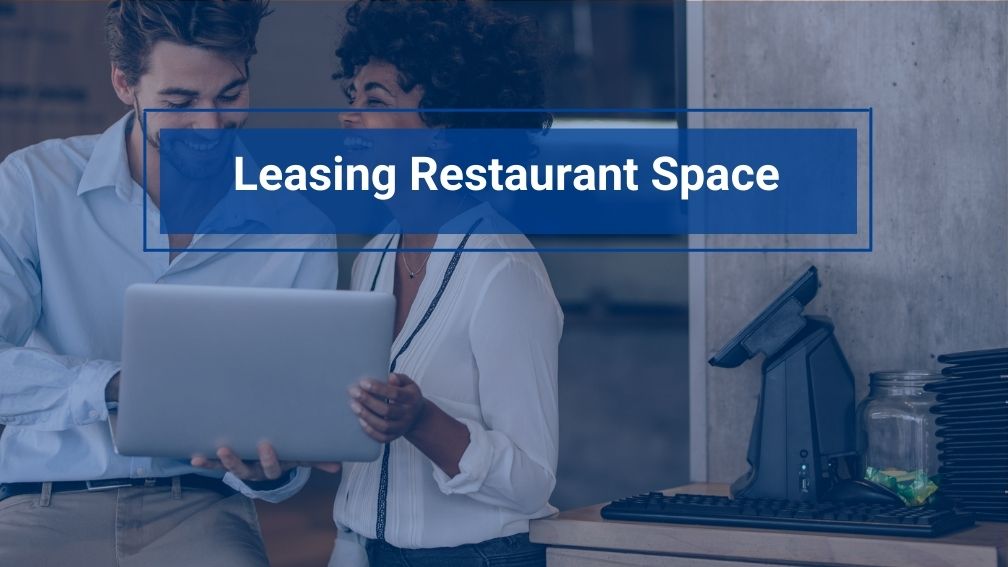Leasing Restaurant Space: Tips on Lease Terms, Lease Costs and Negotiations
Last Updated on March 28, 2024 by Morgan Beard
Understanding the nuances of leasing restaurant space is crucial for long-term success. The restaurant real estate market is competitive right now, with more than 50% of retailers planning for brick and mortar expansion over the next five years, according to a report by Colliers.
The Restaurant Real Estate Market in 2024
Resilient consumer’s spending is powering the economy and in return the retail and restaurant real estate market. According to National Restaurant News, “restaurants are finding landlords offering less attractive finish-out allowances than before the pandemic.” Supply of restaurant space is low and demand for prime locations is high. That combination gives landlords the upper hand in negotiations and creates a competitive landscape for restaurant tenants looking to expand their lease portfolio.
To add fuel to that competitive landscape, shopping centers and mixed used property development construction projects are still delayed from the pandemic, limiting available inventory for many expanding restaurant concepts. This supply-demand imbalance is empowering landlords to demand higher rents and more favorable terms from prospective restaurant tenants. In saturated urban markets, competition for premier restaurant spaces is incredibly fierce, with multiple brands vying for the same high-profile locations. Restaurateurs must be strategic and prepared to negotiate firmly to secure viable properties that meet their operational needs and budget constraints.
This blog post on Leasing Restaurant Space will dive into the fundamentals of real estate leasing strategies to equip commercial tenants and restaurateurs. Check out our blog post on Commercial Lease Agreement: Everything Tenants Need to Know, for a much deeper dive on tenant leasing tips.
Lease Terms for Restaurants
When reviewing potential leases, pay close attention to the term length and renewal options. Restaurants typically require longer lease terms, around 5-10 years, to justify hefty upfront costs like renovations and equipment purchases. Negotiate renewal option periods to maintain flexibility long-term. Examine other provisions like permitted use clauses, ensuring your concept aligns with the permitted operations.
- Lease Duration: Determine the length of the lease, ensuring it aligns with your restaurant’s goals and financial projections. Shorter leases provide flexibility, while longer leases offer stability but may constrain future expansions or relocations.
- Rent Structure: Understand the rent structure, whether it’s a fixed amount or based on a percentage of revenue (percentage lease). Evaluate which option is more favorable for your restaurant’s financial health.
- Rent Escalations: Clarify if there are rent escalations during the lease term. Gradual annual increases are common, but ensure they are reasonable and manageable within your projected revenue growth.
- Common Area Maintenance (CAM) Charges: Familiarize yourself with CAM charges, which cover the maintenance and upkeep of shared spaces within the property. Analyze the allocation of CAM charges and negotiate to avoid excessive burdens.
Lease Costs for Restaurants
Rent is a massive expense for any restaurant, oftentimes the second largest expense after payroll, but secondary costs can substantially impact profits too. Negotiate triple net charges carefully, as taxes, insurance, and operating expenses are often underestimated. Percentage rent clauses, while risky, may be leveraged in prime retail destinations with high foot traffic. Weigh tenant improvement allowances, which can offset upfront construction costs.
- Common Area Maintenance (CAM) Fees: CAM fees cover the shared operational expenses of the property, such as landscaping, parking lot maintenance, and security. Understand the breakdown of CAM fees and negotiate a reasonable share based on your space utilization.
- Utilities: Determine which utilities you are responsible for and whether they are separately metered. Understand the historical utility costs associated with the space to estimate monthly expenditures accurately.
- Insurance: Research the insurance requirements specified in the lease agreement. Property insurance and liability insurance: are typically required. Seek insurance quotes in advance to factor these costs into your budget.
- Taxes: Understand your tax obligations, including property taxes. Confirm whether the landlord or tenant is responsible for property tax payments and ensure it aligns with local laws, municipal codes and practices.
- Repairs and Maintenance: Clarify who is responsible for minor repairs and regular maintenance costs, such as HVAC servicing or plumbing issues. Discuss the process for requesting repairs, janitorial services and establish communication channels with the landlord.
- Operational Expenses: Apart from fixed lease costs, consider the variable operational expenses, such as staffing, inventory, marketing, and equipment upkeep. Accurately project these costs to effectively analyze the profitability of the space.
- Security Deposit: A lengthy and costly restaurant buildout often requires landlords to request larger security deposits. Restaurateurs should negotiate to limit the deposit size to no more than 3-6 months’ rent and allow the deposit to burn down or reduce over the lease term.
Negotiation Tips for Restauranteurs
Conduct thorough market research and lean on professional representation. Understanding vacancy rates, average rents, and concessions being offered will arm you with the insights required to drive a fair deal. Every commercial real estate property has opportunities for the restaurant tenant to negotiate with the property owner.
A comprehensive market analysis should evaluate factors like the target demographics and average household incomes of the surrounding area. After all, a restaurant’s sales potential is heavily influenced by the disposable income levels and dining habits of local patrons. Examine traffic counts, parking availability, visibility, and accessibility – does this location check the boxes for capturing your concept’s perfect customer base?
Dive into neighborhood rental rates, but also study the operating metrics of comparable restaurants nearby. Their gross sales levels and menu pricing strategies can indicate whether the lease rate aligns with achievable revenue projections. Factor in projected kitchen labor costs based on the local workforce. Rising wages can dramatically impact a restaurant’s fixed operating costs.
With detailed market intelligence compiled, including an intimate understanding of the trade area’s consumer dynamics, restaurateurs can benchmark proposed leases against what comparable operators are paying in truly similar situations.
Highlight Your Concept’s Value
A unique, differentiated concept can be a major asset in negotiating with prospective landlords. If you’re bringing an in-demand cuisine or untapped energy to a neighborhood, promote how your restaurant will benefit the area’s appeal. Landlord’s will look at restaurant tenants as a long-term investment and partner in catapulting the space’s potential. If you have a hot concept leverage that as bargaining power in securing a new location that is in the ideal space for your restaurant.
Local Market Trends
To build an airtight negotiation strategy, restaurateurs must have a deep understanding of their local market’s fundamentals. Study recent comparable restaurant deals in the trade area, scrutinizing the lease rates, tenant improvement allowances, and concession packages achieved. Analyze neighborhood development activity, foot traffic patterns, parking ratios and other drivers of customer accessibility. Consult restaurant association data to benchmark operational costs against similar concepts.
Partner with Tenant -Rep & Contract Lawyer
Very few restaurateurs have the bandwidth or specialized expertise to go it alone in complex lease negotiations. Savvy operators enlist professional tenant representation brokers with command of the local market. These brokers can contextualize opportunities, push for maximum concessions, and ensure protection via appropriate lease provisions.
Negotiate Responsibly & Build a Relationship
While the goal is an ideal deal for your business, avoid overaggressive negotiation tactics that could jeopardize the relationship before a lease commences. A respectful, solutions-oriented approach is wise when minor conflicts arise.
Protect Your Interests
Certain protective provisions like co-tenancy clauses, radius restrictions, or exclusives can safeguard your business from undesirable neighboring operations. Negotiate these cautiously yet firmly.
Tenant Improvement Allowance
A generous TI allowance can substantially reduce the upfront capital required to build out a new restaurant space to the tenant’s specifications. Savvy operators should benchmark the offered allowance against market norms and negotiate for higher contributions, especially if taking possession of a vanilla shell space requiring extensive improvements. Oftentimes it is mutually beneficial for the Landlord and restaurateur to agree on leasehold improvements to the commercial space.
Secure Contingencies
Negotiate a contingency period to evaluate any physical due diligence and understand all property conditions before finalizing the lease. These buffer periods prevent rushed decisions.
How Lease Management Software Empowers Restaurants
As restaurateurs juggle multiple leases across an expanding portfolio, comprehensive lease management software proves invaluable. Platforms like Occupier provide a centralized repository for storing and accessing lease documents, critical dates, and pertinent data. Automated notifications help teams never miss a rent payment, renewal deadline, or option exercise period.
Lease management tools also facilitate cost oversight, tracking rent schedules and operating expense reconciliations across the entire portfolio. Restaurateurs can analyze their total occupancy costs holistically to identify savings opportunities. When operating with slim profit margins, such visibility is critical.
During the site selection process, software aids in evaluating potential leases side-by-side, allowing decision-makers to compare terms, concession packages, and projected financials. Once deals are executed, lease administration software generates abstracted data to simplify portfolio tracking and reporting.
Whether streamlining accounts payable or undergoing an expansion, restaurateurs need full command of their lease obligations. The right lease management tools provide that control, organizing all real estate particulars in one digital ecosystem. This empowers operators to optimize their portfolios, reduce occupancy costs, and maintain compliance.
Leasing Restaurant Space Summarized
The restaurant sector’s resilience is proving strong! With more and more consumers heading into their favorite eateries. In order to expertly strategize your real estate expansion strategy, starts with mastering lease provisions, cost structures, and skilled negotiation tactics, operators can secure favorable rental deals. An educational, measured approach complemented by professional representation and market expertise is vital when navigating this high-stakes process. With patience and strategic planning, restaurateurs can land their dream location and unlock profitability.

Product Tour
Take a self-guided tour and see how the fastest-growing commercial tenants leverage Occupier for lease management & lease accounting.
